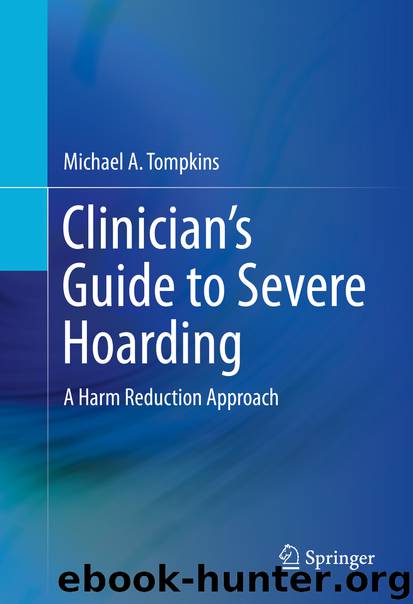Clinician's Guide to Severe Hoarding by Michael A. Tompkins

Author:Michael A. Tompkins
Language: eng
Format: epub
Publisher: Springer New York, New York, NY
6.5.2.6 Assessing Social Capacity
The clinician may wish to assess the client’s current level and quality of social support as well as the level of social support available to the client in the future. Many times, the clinician may need to speak with family members or others involved in the client’s care and support for accurate information on his social capacity. Does the client have family members or friends who are aware of the hoarding situation? Do they live nearby and how often do they visit him at home or attend events with him outside his home? How often does the client speak to them? Are these relationships caring and supportive or hostile and tense? Does the client reach out to others for support or does he refuse to seek assistance or to welcome visits from friends and family members? To gain a sense of current support, the clinician can ask the client about a typical day. Does he spend the day at home or does he leave? When he leaves, where does he go and with whom does he visit? Do the people he visits know about the hoarding situation?
To gather information regarding the client’s financial resources, the clinician can ask about his work history, retirement situation, and sources of income and expenses and assets. The client and his family may not wish to share specifics about his financial situation but that may not be necessary if the clinician can gain a sense that the client has adequate resources to pay for services, including clearing and cleaning services, if he is open to them. In particular, I recommend the clinician ask the client how he pays his bills and how often he misses payments and why. Many people who hoard have adequate financial resources but still fail to pay their bills on time because they misplace the bills, their checkbook, or cannot find stamps and envelopes in the cluttered environment. In such cases, an effective HR plan will include strategies to assist the client pay his bills on time. In addition, if the client is an older adult, I recommend the clinician ask the client who manages his finances. Who pays his bills, if he does not and who is a signatory on his checking and saving accounts? This information may assist the clinician to identify possible financial risks the client may face due to financial exploitation by friends, family members, or professionals.
In addition to interviewing the person who hoards and his family members, clinicians may complete measures of social functioning, such as the Social Support Questionnaire (Sarason, Sarason, Shearin, & Pierce, 1987) or the Medical Outcomes Study (MOS) Social Support Survey (Sherbourne & Steward, 1991). These measures assess the perceived availability of functional support and typically include the level of: 1) emotional support, which involves caring, love, and empathy; 2) social companionship, which involves spending time with others in leisure and recreational activities; 3) information or guidance support, which involves others providing advice or assistance in solving problems; and,
Download
This site does not store any files on its server. We only index and link to content provided by other sites. Please contact the content providers to delete copyright contents if any and email us, we'll remove relevant links or contents immediately.
Periodization Training for Sports by Tudor Bompa(8170)
Why We Sleep: Unlocking the Power of Sleep and Dreams by Matthew Walker(6618)
Paper Towns by Green John(5091)
The Immortal Life of Henrietta Lacks by Rebecca Skloot(4526)
The Sports Rules Book by Human Kinetics(4294)
Dynamic Alignment Through Imagery by Eric Franklin(4118)
ACSM's Complete Guide to Fitness & Health by ACSM(3989)
Kaplan MCAT Organic Chemistry Review: Created for MCAT 2015 (Kaplan Test Prep) by Kaplan(3940)
Introduction to Kinesiology by Shirl J. Hoffman(3726)
Livewired by David Eagleman(3684)
The Death of the Heart by Elizabeth Bowen(3552)
The River of Consciousness by Oliver Sacks(3541)
Alchemy and Alchemists by C. J. S. Thompson(3451)
Bad Pharma by Ben Goldacre(3357)
Descartes' Error by Antonio Damasio(3230)
The Emperor of All Maladies: A Biography of Cancer by Siddhartha Mukherjee(3068)
The Gene: An Intimate History by Siddhartha Mukherjee(3047)
The Fate of Rome: Climate, Disease, and the End of an Empire (The Princeton History of the Ancient World) by Kyle Harper(3003)
Kaplan MCAT Behavioral Sciences Review: Created for MCAT 2015 (Kaplan Test Prep) by Kaplan(2940)
